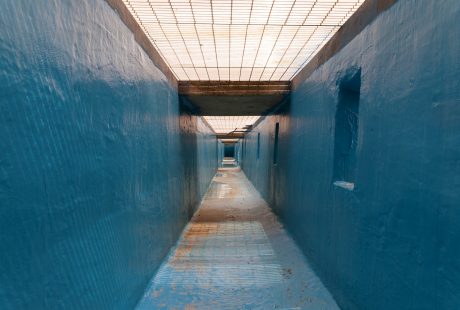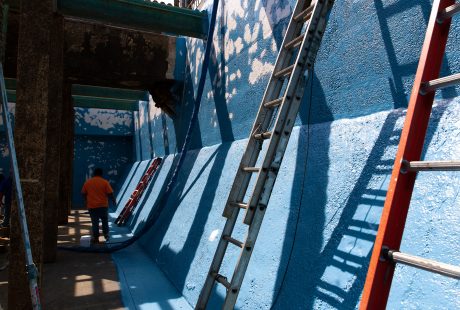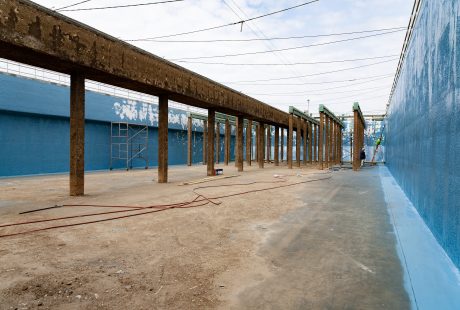 To kick off 2020, Induron is excited to announce that its 2019 Project of the Year is the Texarkana Water Utilities Clarifier Rehabilitation. For the facility to effectively treat the potable water used in the surrounding community, Texarkana Water Utilities needed to rehabilitate a concrete clarifier in their Millwood Potable Water Treatment Plant in Ashdown, Ark.
To kick off 2020, Induron is excited to announce that its 2019 Project of the Year is the Texarkana Water Utilities Clarifier Rehabilitation. For the facility to effectively treat the potable water used in the surrounding community, Texarkana Water Utilities needed to rehabilitate a concrete clarifier in their Millwood Potable Water Treatment Plant in Ashdown, Ark.
“This job is emblematic of the teamwork amongst our sales team,” commented Davies Hood, president of Induron Coatings. “Both Russell Hicks and Paul Powers deserve the credit for overcoming the challenges faced during this project to deliver a high-quality coatings solution.”
Likewise, Induron Sales Representative Paul Powers noted this was one of the biggest concrete projects he has been a part of. “This was a very unique project, not just in its size, but also in the amount of communication and coordination that it took to make it run as smoothly as it did,” Powers said. “Everyone had a role to play, whether it was the front office, the plant, technical service or customer service.”
Read about the original state of the clarifier, the coatings solution Induron recommended, the challenges that we overcame, and the outcome below or in Water & Wastes Digest.
The State of the Clarifier
 The concrete floors and sidewalls of the clarifiers in the potable water treatment facility were old and in a poor state. There were areas of cracking, spalling and even leaking concrete that called for extensive repair. To comply with health regulations, this remedial activity was recommended. Plus, coatings in water treatment facilities where the water contacts the paint must be NSF Standard 61 approved to ensure harmful contaminants do not leak into the water. So, this project required cleaning, repair and careful specification and application of proper coatings.
The concrete floors and sidewalls of the clarifiers in the potable water treatment facility were old and in a poor state. There were areas of cracking, spalling and even leaking concrete that called for extensive repair. To comply with health regulations, this remedial activity was recommended. Plus, coatings in water treatment facilities where the water contacts the paint must be NSF Standard 61 approved to ensure harmful contaminants do not leak into the water. So, this project required cleaning, repair and careful specification and application of proper coatings.
The Coatings Solution
Based on the state of the concrete clarifier, Induron recommended the following coatings solution. The concrete was first prepped with a 5000 Psi power wash with an acid etch solution to fulfil the ICRI CSP-3 concrete surface profile. ICRI CSP-3 is one of ten classifications of surface textures developed by the International Concrete Repair Institute (ICRI). These classifications are accepted as industry standards that guide the installer on how to achieve the proper texture for successful bonding of the overlay or coating. CSP-3 is the recommended cleanliness and profile for applying high build coatings (10- 50 mils DFT) and is usually achieved on vertical surfaces by using a light blast.
 Next, a two-component, polymer-modified, fast-setting, non-sag mortar, was used to fill the eroded and cracked areas of the concrete. This product was specified because it is NSF Standard 61 approved for contact with potable water.
Next, a two-component, polymer-modified, fast-setting, non-sag mortar, was used to fill the eroded and cracked areas of the concrete. This product was specified because it is NSF Standard 61 approved for contact with potable water.
Then, Induron’s AquaClean, which has excellent flow, wetting and adhesion to concrete, was used as a prime coat to mitigate out gassing. Because concrete is porous by nature, its breathing often leads to pin holes in the coating, which can lead to water soaking into the concrete and potentially lead to paint failure. AquaClean was specified because it can easily be applied in a thin film of 4.0 to 6.0 mils and is NSF Standard 61 approved.
Lastly, Induron’s PermaClean 100 was used as a barrier coating because of its unrivaled film build and ultra-low permeability. PermaClean was previously NSF approved for 50 mils, but to meet the needs of this particular project, we had it NSF Standard 61 tested and re- certified for 150 mils DFT in three coats.
The Challenges Overcome
Federal law requires that the top coat designed for water contact be NSF Standard 61 approved, but on this project, use of NSF Standard 61 approved products in all phases was necessary to comply with the Arkansas Health Department’s requirement: “All surfaces that come into contact with potable water must have an NSF-approved product from the top of the film to the concrete substrate.”
NSF certification is a key mechanism for ensuring that products meet strict standards for public health protection. Products must undergo extensive testing and material analysis, as well as unannounced plant inspections to evaluate every aspect of the product’s development before it can earn an NSF Standard 61 certification. NSF Standard 61 certification is not a one-time event. It involves regular onsite inspections of manufacturing facilities and regular re-testing of products to ensure that they continue to meet the same high standards required to maintain certification over time.
Because the Induron products required for this project were NSF Standard 61 certified, the company successfully worked with Bazan Painting Co. to rehabilitate the clarifier and ensure that it complies with Arkansas’ health regulations.
The Outcome
In the end, the owner and contractor were very pleased with the coatings used and the project as a whole. “The owner is very happy with the final outcome of the project,” said Kevin White from Bazan Painting Co. “I am sure there will be future projects performed using the same products. I was also pleased with Induron’s response time, knowledge and assistance received from Russell and Paul.”
And that’s the Induron difference. When you work with us, you not only have access to innovative technology, but also the marketplace expertise and assistance of our sales representatives. We invest ourselves in our customer’s success and satisfaction.




